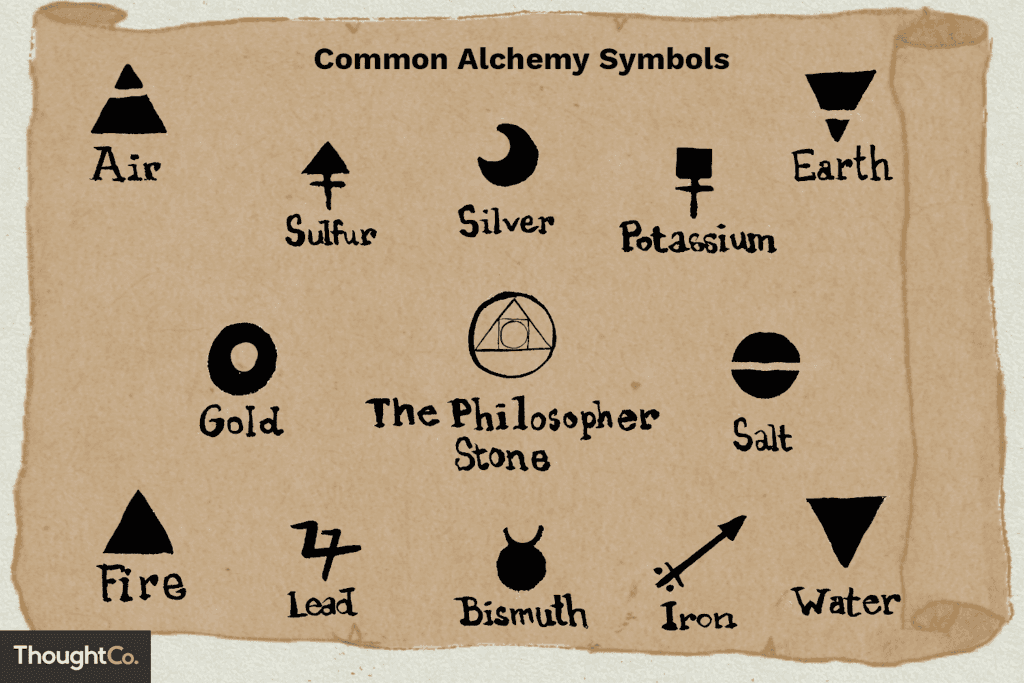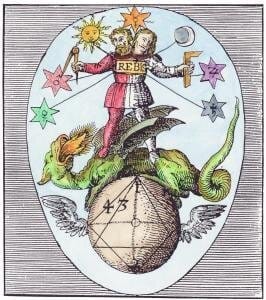
From Peacock’s Tail to Prismatic Transformation
Alchemy has long fascinated seekers of both material and spiritual transformation. Far more than an early form of chemistry, alchemy is a symbolic journey of purification, transformation, and rebirth. In this article, we explore the diverse stages of alchemy—from the vibrant Peacock’s Tail and the illuminating Prismatic Stage to the classical 7 metal stages and the simplified red, white, and black phases of transformation. We’ll also delve into the meanings of nigredo, albedo, and rubedo, the key color stages that have guided alchemists for centuries.
A Brief Overview of Alchemy
At its core, alchemy is about change. Historically, alchemists pursued the transmutation of base metals into gold, but their work also symbolized the inner transformation of the self. Each stage in the alchemical process represents a phase of breaking down, purifying, and ultimately perfecting the material or spirit. These processes are rich in metaphor, suggesting that the journey toward wholeness involves cycles of decay, illumination, and regeneration.

The 7 Metal Stages in Alchemy
In classic alchemy a 7 metal system is used. Each metal corresponds with planetary influences and specific stages of development:
- Lead (Saturn):
- Symbolism: Represents the base, unrefined state of matter—raw and heavy with potential.
- Stage: The beginning of the transformation, where impurities must be dissolved.
- Tin (Jupiter):
- Symbolism: Suggests the initial signs of change and expansion.
- Stage: A subtle awakening in the process, where transformation begins to take shape.
- Iron (Mars):
- Symbolism: Conveys strength, conflict, and the necessary struggles involved in change.
- Stage: Reflects the forceful breakdown of old structures.
- Copper (Venus):
- Symbolism: Emphasizes balance, beauty, and the union of opposites.
- Stage: A stage of refinement and harmonization between the contrasting elements.
- Mercury (Mercury):
- Symbolism: Embodies fluidity, volatility, and the mutable nature of matter.
- Stage: Represents the dynamic, ever-changing phase of the alchemical process.
- Silver (Moon):
- Symbolism: Associated with clarity, reflection, and the gradual purification of the material.
- Stage: Indicates a phase of emerging refinement and the shedding of impurities.
- Gold (Sun):
- Symbolism: The ultimate goal in alchemy, symbolizing perfection, enlightenment, and wholeness.
- Stage: The culmination of the alchemical journey—the realization of the philosopher’s stone and the attainment of spiritual and material perfection.
These metal stages reflect a comprehensive pathway of change, each building upon the last to guide the raw material toward its most exalted state.

The Simplified Color Stages: Red, White, and Black
While the 7 metal stages offer a detailed roadmap, many alchemists also employed a simplified model using three primary color stages. These stages—nigredo, albedo, and rubedo—capture the essence of transformation in vivid color symbolism:
Nigredo – The Blackening
- Description:
Nigredo marks the initial phase of the alchemical process. It is characterized by darkness, decay, and the dissolution of existing structures. This stage reflects the necessity of confronting and breaking down the base material (or the lower aspects of the self) to pave the way for transformation. - Symbolism:
Often associated with death and decomposition, nigredo is not an end but a necessary phase of purification. By getting rid of the old you make way for the new.
Albedo – The Whitening
- Description:
Following the dark phase of nigredo, albedo represents purification and cleansing. In this stage, the material (or the self) is washed clean of impurities, emerging into a state of clarity and calm. - Symbolism:
The white of albedo signifies rebirth and the re-emergence of light. It is a phase of reflection, inner cleansing, and the harmonization of the previously disordered elements.
Rubedo – The Reddening
- Description:
Rubedo is the final stage of the alchemical process. Here, the transformation is complete, and the material takes on a red hue—a sign of vitality, energy, and the successful union of opposites. - Symbolism:
Red, as the color of rubedo, embodies the attainment of wholeness. It represents not only the culmination of the alchemical work but also the integration of all previous stages into a perfected, unified state.
The Peacock’s Tail Stage: A Spectrum of Possibilities
Among the many evocative symbols of alchemy, the Peacock’s Tail stage stands out for its beauty and complexity. This phase is so named because, like the iridescent feathers of a peacock, the material displays a spectrum of brilliant colors.
- Characteristics:
- Vibrancy and Diversity: The appearance of multiple colors indicates that the transformation is well underway, with various energies and elements merging and interacting.
- Intermediate Phase: It typically follows the dissolution of old forms (nigredo) and precedes the final integration (rubedo). The Peacock’s Tail is a moment of awe—a visual representation of the myriad potentials emerging from the alchemical work.
- Symbolic Meaning:
The diversity of hues seen in the Peacock’s Tail stage suggests that transformation is multifaceted. It is a reminder that growth often involves complexity and that beauty can emerge from the blending of opposites. This stage encourages the alchemist (or the individual on a personal journey) to embrace all aspects of change, even those that appear chaotic or contradictory.
The Prismatic Stage: Light Refracted into Transformation
Closely related to the Peacock’s Tail is the Prismatic Stage, where light itself is broken into its constituent colors—a metaphor drawn from the natural phenomenon of dispersion through a prism.
- Characteristics:
- Refracted Light: As light passes through a prism, it separates into a spectrum of colors. In alchemy, this stage represents the disintegration of a unified state into multiple, distinct facets.
- Dynamic Change: This stage is often seen as one of intense activity, where the elements of the material (or the self) are examined in their many forms before being reassembled into a higher unity.
- Symbolic Meaning:
The prismatic stage illustrates that transformation is not linear but multifaceted. It is a period where the whole is broken down into parts, each revealing a unique quality or potential. Ultimately, these parts come together to form a new, integrated whole. In both the Peacock’s Tail and Prismatic stages, the alchemical process mirrors the natural phenomena of light and color, underscoring the idea that true transformation involves the integration of diversity.
Integrating the Alchemical Journey
Alchemy is as much an internal, psychological process as it is an external, material one. Whether interpreted through the lens of the 7 metal stages or the simplified red, white, and black phases, the journey of alchemy invites us to explore our own processes of transformation.
- From Darkness to Light:
The descent into nigredo—the dark, seemingly chaotic phase—is essential for breaking down outdated structures. This dissolution allows for the purification (albedo) and the eventual emergence of a renewed, vibrant state (rubedo). - Embracing Complexity:
The Peacock’s Tail and Prismatic stages remind us that transformation is not always a straightforward process. The interplay of multiple colors and energies symbolizes the rich, often unpredictable nature of change. Each phase, no matter how chaotic it might appear, contributes to the final, unified state of perfection. - A Path to Wholeness:
Ultimately, the alchemical process is a metaphor for personal growth. It teaches that true transformation involves accepting and integrating all aspects of our being—both the light and the dark, the simple and the complex.
Conclusion
The stages of alchemy—from the raw potential of lead to the perfected state of gold, and from the disintegrative darkness of nigredo to the luminous rebirth of rubedo—offer a profound metaphor for transformation. The evocative imagery of the Peacock’s Tail and the dynamic Prismatic Stage further enriches this ancient art, reminding us that true change is multifaceted and deeply interconnected.
Whether you are drawn to alchemy for its historical significance or its symbolic resonance, understanding these stages can provide valuable insights into the nature of transformation. Embrace the journey, recognize the beauty in every stage, and allow the process of change to guide you toward a state of balance and wholeness.

